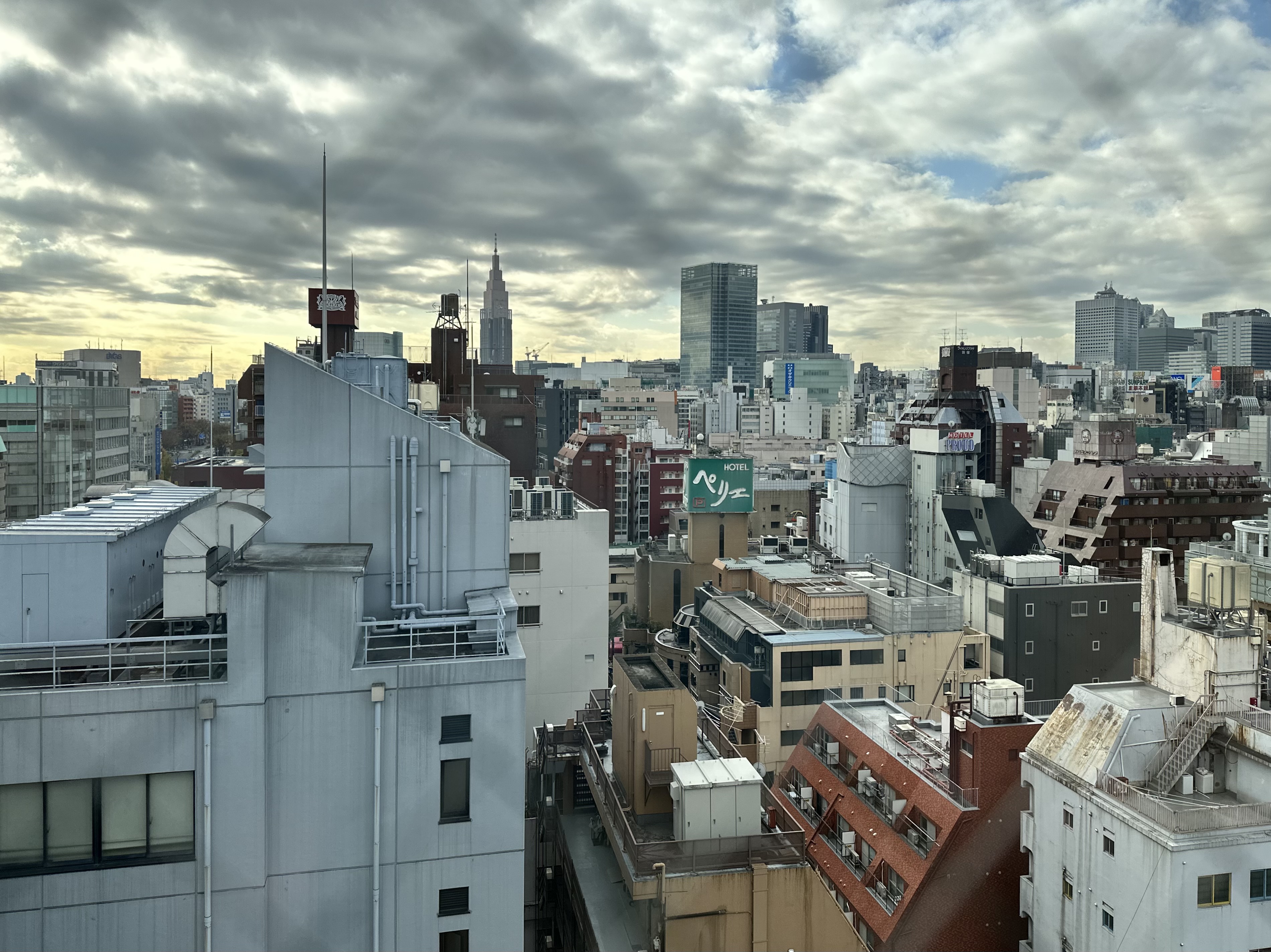In the early evening I sit on a mattress on the floor with a view of the Docomo tower. I love Tokyo, and specifically Shinjuku. I love everything about it, from the name (new station) and it’s sound in both Japanese and English, to the density and variety. The train and pedestrian structure of Shinjuku’s urbanity brings together working folk, shopping folk, nightlife punters, bouncers, and ramen cooks. Unlike Shibuya it’s not as popular, from a foreign visitor perspective. Unlike Dakanyama or Naka Meguro it’s not as hip, doesn’t feature ad agencies or as many desert cafe’s. Unlike Ginza, it’s not where glitzy shopping is done, though there’s plenty of that. Unlike Ueno, or Akihabara, or Shimo-Kitazawa, or Kichijoji, or so many other spots, it doesn’t have a single theme, a single purpose. Shinjuku is simply the heart of a city. It is dense. Full simultaneously with trains, malls, chain stores, and mediocre coffee, it can overwhelm. And yet like anywhere in Tokyo there are alleys with life and quiet neighborhoods tucked seemingly at random behind giant buildings visible for miles. It, more than anything else, feels like a city from the future. I love it.
People, I often say, are shaped by the places they inhabit. Where, rather than who, sometimes feels like the most important part of any life story. The where, even with similar friends, with similar activities, remains unique. Among the globe’s multitude of urban train stations, boarding the last train out of Shinjuku on a commuter line is difficult to share without the place. Being pressed in, unable to lift one’s arms, vulnerable and part of the sway, can be experienced in a couple of spots in Japan. It’s Shinjuku’s unique blend of being a hub to the suburbs and large late night gathering spot makes it one of the few to truly have to pack the last trains out. I remember it fondly, as well as other nights spent in net cafes, having just missed that last train. Shinjuku is part of so many memories, from recent ones, meeting friends for drinks or dinner, both of us coincidentally in Tokyo, to older ones of our first trips together, to noodle stall lunches and coffees on my own or with roommates decades ago. It’s been more than twenty years since I first visited Shinjuku. My oldest photos show a city that feels the same in many ways. Studio Alta’s display still beckons, once a popular date meeting spot for me. The Hanzono-Jinja Shrine in Kabukicho, first visited with a friend in April, the cherry blossoms still lingering, is now a part of a city we know well, pushing the stroller past it on the way to the station last week.
Better yet, we are shaping Shinjuku into entirely new memories with these adventures. A block from Shinjuku Sanchome station will now always remind me of a cold December night, carrying 5’s around while she cried bitterly, having put her hand in Tara’s udon. I’ll always remember watching Tara change her on a stool outside a restaurant a few blocks further over. Perhaps the drug stores I discovered while hunting diapers will come in handy to some future self. These memories, born out of our new companion, are now imbedded in my favorite city, waiting to be built upon on our next visit.
